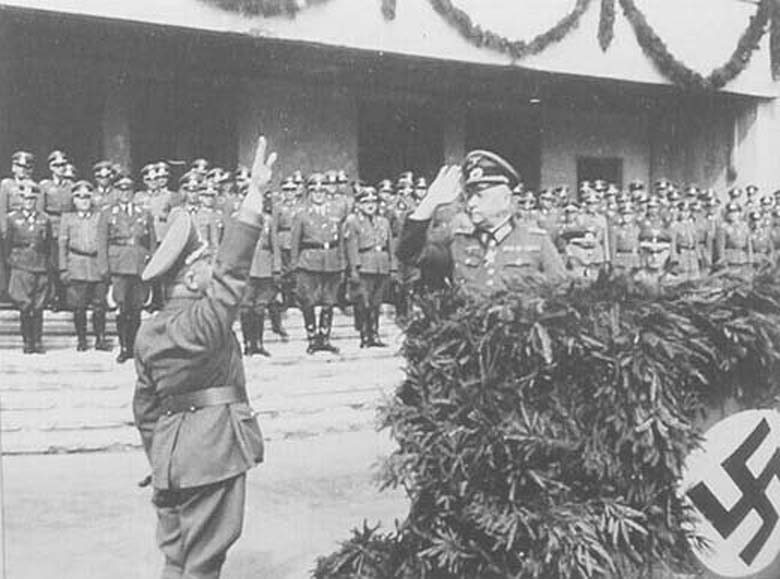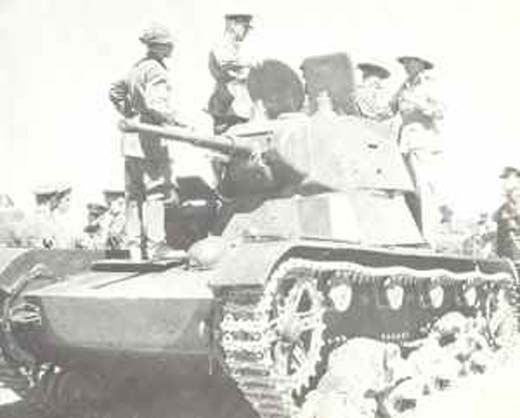Air Operations, Europe
The RAF raid Bremen.
[Eastern Front
NORTHERN SECTORThe 48th Army launches a fierce counterattack with 2 rifle divisions, an NKVD division and a mountain brigade, forcing the XXXIX Panzer Corps out of Mga and reopening the railway line to Moscow. Gen Antonyuk takes over command of the 48th Army from Akimov.
With his forces at the gates of the city, the weather begins to turn against Leeb, the onset of the autumn rains bringing movement to a standstill. Progress becomes difficult as the untracked components of the armies bog down.
With Leningrad directly threatened, the Stavka authorizes Popov to raise a new army, the 55th, in the Slutsk and Kolpino areas in order to defend the southern approaches of the city. A new 42nd Army is also formed. The 55th, under Maj-Gen Lazarev, has 4 rifle divisions and 1 militia division while the 42nd, under Lt-Gen Ivanov, has 1 rifle and 2 militia divisions.
On the far right wing of Army Group North, the 16th Army pushes deeper into the Valdai Hills with its LVI Panzer, II and X Corps. Demyansk falls to the 19th Panzer Division of the LVII Panzer Corps as Army Group Center's left wing drives north. The 20th Panzer Division of the LVII Panzer Corps and the II Corps isolate a large Soviet force near Lake Selinger and moves closer to Ostashkov.
CENTRAL SECTORThe XXIV Panzer Corps launches strong attacks out of the Novgorod-Seversky bridgehead in an effort to penetrte the heart of the Southwest Front. On the left flank, the XLVII Panzer Corps comes under increasing pressure by persistent Soviet attacks at Trubchevsk.
Generalkommisar Wilhelm Kube |
 |
With the 2nd Panzer Groups deep in the northern flank of the Southwest Front, the 1st Panzer Groups renews its attack, aiming to roll up Kirponos' left wing. Frelenko's 38th Army is unable to prevent the III Panzer Corps from crossing the Dniepr southeast of Kremenchug and establishing a bridgehead on the eastern bank. Elements of the LII Corps begin to cross into the Kremenchug bridgehead.
At the end of August the South Front holds the Dniepr line from the mouth of the river to the Vorskla River. The 9th and 18th Armies stand from the Black Sea to the Dniepr bend south of Enepropetrovsk. The newly formed 12th and 6th Armies hold the Zaporozhe and Dnepropetrovsk sectors. Sofronov's Coastal Army continues to hold on to Odessa. Army Group South deploys the 6th Army around Kiev, 17th Army from Cherkassy to the south of Kremenchug, 1st Panzer Group at Dnepropetrovsk and the 11th Army and 3rd Rumanian Army on the lower Dniepr, opposite Nikopol.
FINLAND AND NORWAYTerioki falls to the Finns as they move closer to the pre-war Russo-Finnish border.
THE OSTHEERThe first major casualty returns compiled by the German High Command show that by the end of August the Ostheer has more than 410,000 casualties, 46,000 men losing their lives during August alone. In the same period barely 217,000 reinforcements have been fed into the line. The panzers have suffered similarly, 1st Panzer Group being reduced to half its original complement, 2nd Panzer Group to a quarter and 3rd to approximately forty percent. The 4th Panzer Group remains strong, with close to three quarters of its original complement in action. Panzer losses number over 1,478 vehicles, but again the number of replacements fall way short of the numbers lost.
OPPOSING DEPLOYMENT AT THE END OF AUGUST 1941Despite decreasing strength of the Ostheer, the number of divisions remain constant ant 19 panzer, 15 motorized and 102 infantry divisions.
During August the Soviet High Command raise a number of new armies. The 6th and 12th Armies are reformed in the South Front area, 37tn Army around the Kiev Fortified Region, 38th and 40th Armies to support the Southwest Front, 42nd formed around Krasnogvardievsk, 48th around Novgorod, 49th in Moscow reserve, 50th in the Bryansk Front, 51st Independent Army in the Crimea, 52nd Independent Army along the line of the Volkhov, 53rd in central Asia and 55th Army at Slutsk-Kolpino.
The hard fought battles of August 1941 had pushed the Soviet armies back to the gates of Leningrad in the north and to the line of the Dniepr in the south. Only in the center had the line remained relatively stable, providing the Stavka with the opportunity to replenish its broken armies on the road to Moscow. However, Hitler's unexpectd decision to deal with the Soviet armies in the Ukraine would take Stalin by surprise once again, and lead to the greatest battle of encirclement of the war so far.
Iran
British and Russian forces meet at Kazvin.
British Soldiers Inspecting a T-26 Tank |
 |